

50 Billion plastic ball pens end up in landfills every year !!!
While a pen might seem like just any other object in our daily lives, the environmental impact of these disposable stationery items is far from trivial.
This blog post would give you several reason why you need to ditch plastic ball pens and highlights why switching to truly sustainable and eco-friendly pens is not just a choice but a necessity for saving our planet because there’s no planet B at the moment (unless we figure out how to survive on Mars like Mark Watney from the Martian).
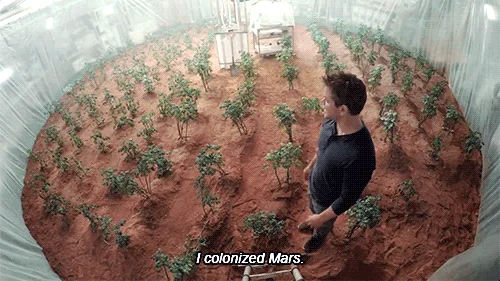
Every year, a staggering 1.6 billion single-use plastic pens are tossed aside in the United States alone—talk about writing off the environment! These plastic scribblers contribute significantly to our growing waste problem, as they often find their final resting place in landfills or oceans, where they stay put and don’t to degrade for ages.
Not very surprisingly, plastic production has skyrocketed, in fact, more than doubling in the last 20 years to reach a hefty 460 million tonnes in 2019.
And the twist? Between 1 and 2 million tonnes of this plastic do the backstroke in our oceans each year, making up about 0.5% of the all the plastic waste out there.
Roughly 50 billion plastic ball pens end up in land fills or oceans each year. And that plastic pen kept on your desk is also gonna end up with a similar fate.
A harmless, tiny plastic ball pen is a slow killer unlike poison. But this little writing instrument is not half as harmless as it looks.
Let us now read in detail about why plastic pen pollution is a slow poison killing humanity, one plastic ball pen at a time !
Plastic pens are a staple in our daily lives, but they come with a significant environmental drawback: they are non-biodegradable.
Made primarily from plastics like polypropylene, these pens don’t break down within a human lifespan, or even several. Instead, they accumulate in landfills, where they sit for hundreds to thousands of years.
As they slowly degrade, they don’t biodegrade but instead break down into smaller pieces, eventually turning into microplastics.
These microplastics linger in the environment, polluting our air, soil and waterways. The enduring presence of these plastics in nature poses serious risks to wildlife and ecosystems, as animals can ingest these particles, leading to harmful effects on their health and the broader ecological balance.
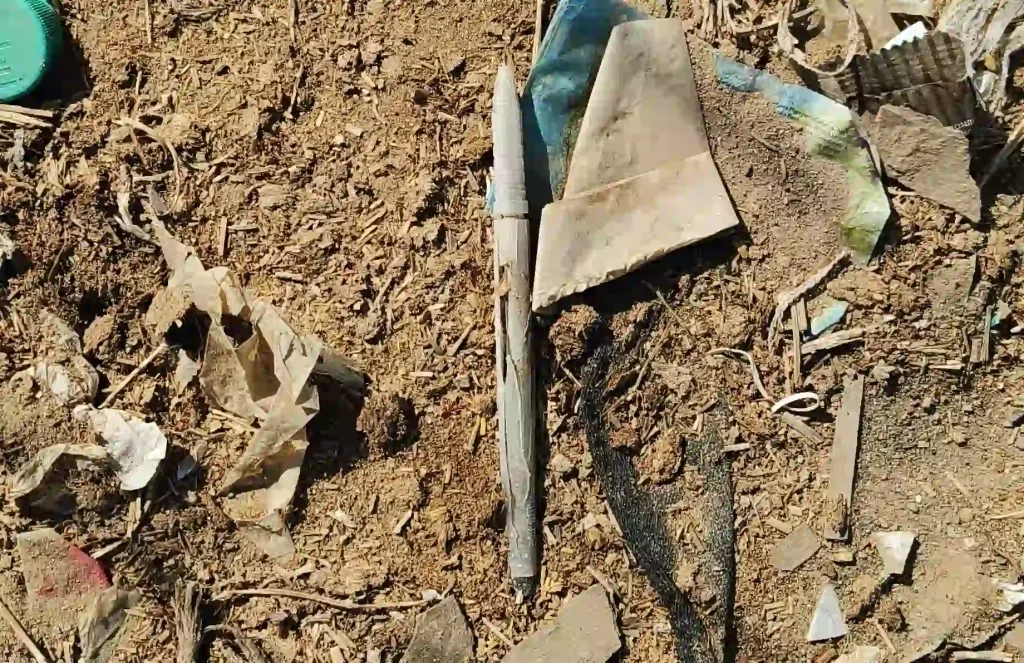
The non-biodegradable nature of plastic pens underscores the need for more sustainable alternatives in our everyday stationery choices.
Some examples the different types of plastics used in plastic pens :
Polypropylene (PP) is the go-to plastic for most ball-point pen bodies. It’s chosen for its strength and ability to withstand heat and chemicals.
But despite these perks, it’s a bit of an environmental headache because it doesn’t break down biologically and can linger in landfills for centuries.
Polystyrene (PS) is another plastic you’ll find inside pens, especially in the ink cartridge tube. It’s chosen for its clarity and sturdiness, which are great for parts that need to be precise.
However, like polypropylene, it’s not environmentally friendly since it also doesn’t degrade naturally.
For the parts of a pen that need to be extra tough, like the outer casing or the clip, manufacturers often use Acrylonitrile Butadiene Styrene (ABS).
This rigid plastic is great for avoiding breakage and wear, but it shares the same environmental downside: it’s non-biodegradable.
And then there’s Polyethylene (PE), which is used occasionally for pen components that require more flexibility. While it’s useful in production, it’s not so great for the planet, taking a very long time to break down and adding to pollution issues.
All these plastics help make pens durable and functional, but their resistance to decomposition makes them a challenge for our environment.
When plastic ball pens, typically made from polypropylene, are thrown away, they don’t just disappear. While it’s a relief that incinerating polypropylene doesn’t emit as toxic gases as some plastics do, burning it still pumps greenhouse gases into our atmosphere.
Even more concerning is what happens when these pens aren’t incinerated. Under the influence of sunlight and heat, discarded polypropylene pens begin to break down, releasing gases like methane and ethylene.
Unfortunately, this process is slow and releases these potent greenhouse gases into the environment, contributing to global warming.
In landfills, where oxygen levels are low and degradation is sluggish, polypropylene waste sits for years, slowly fragmenting and leaching chemicals.
The scenario worsens if these plastics reach our oceans. There, they persist for ages, floating amidst currents, endangering marine life, disrupting ecosystems, and accumulating in vast oceanic garbage patches.
The impact of these seemingly insignificant items is profound, affecting air, land, and sea.
Plastic ball pens discarded in landfills and oceans wreak havoc on both terrestrial and marine environments, posing severe risks to plants and animals alike. In landfills, these pens are part of a larger issue of plastic pollution.
They break down very slowly due to limited oxygen and sluggish degradation rates. During this prolonged breakdown process, harmful substances such as cadmium—a carcinogenic heavy metal—can leach out.
Cadmium is toxic to both plants and animals, and its presence can degrade soil quality, impacting the soil’s ability to support plant life.
The situation in oceans is equally dire. Plastic debris constitutes the majority of marine litter, accounting for 80% of all items found.
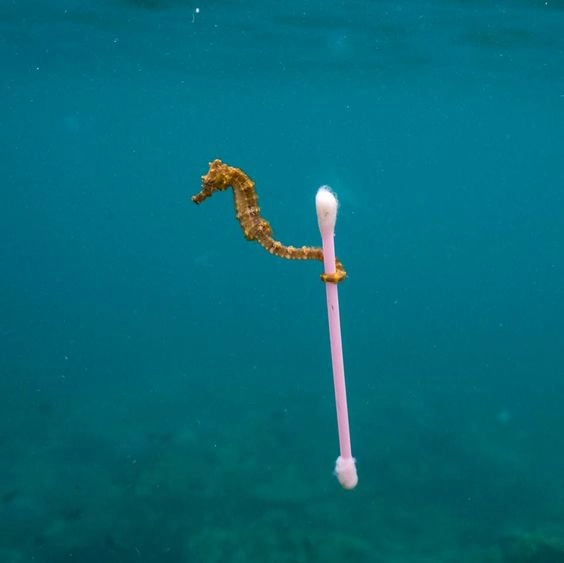
The plastic waste entering our oceans breaks down into microplastics and nanoplastics under natural conditions like sunlight and heat.
These tiny particles are inadvertently consumed by marine species, causing physical harm, internal injuries, or death due to ingestion and entanglement.
This not only threatens individual marine lives but also disrupts entire ecosystems by affecting biodiversity and food chains.
Furthermore, when plastics break down, they release methane and ethylene, potent greenhouse gases that contribute to climate change and deteriorate air quality.
Even terrestrial ecosystems are not spared, as airborne microplastics can settle in soils, potentially altering nutrient dynamics and affecting plant growth.
Overall, the pervasive nature of plastic pollution from ball pens poses a multifaceted threat to environmental health, affecting everything from soil fertility to marine biodiversity and coastal tourism.
Recycling plastic stationery items, especially pens, isn’t as straightforward as tossing them into a recycling bin.
These everyday tools are made from a jumble of materials, including various plastics (like polystyrene or polypropylene), rubbers and metals used in the springs and ballpoints.
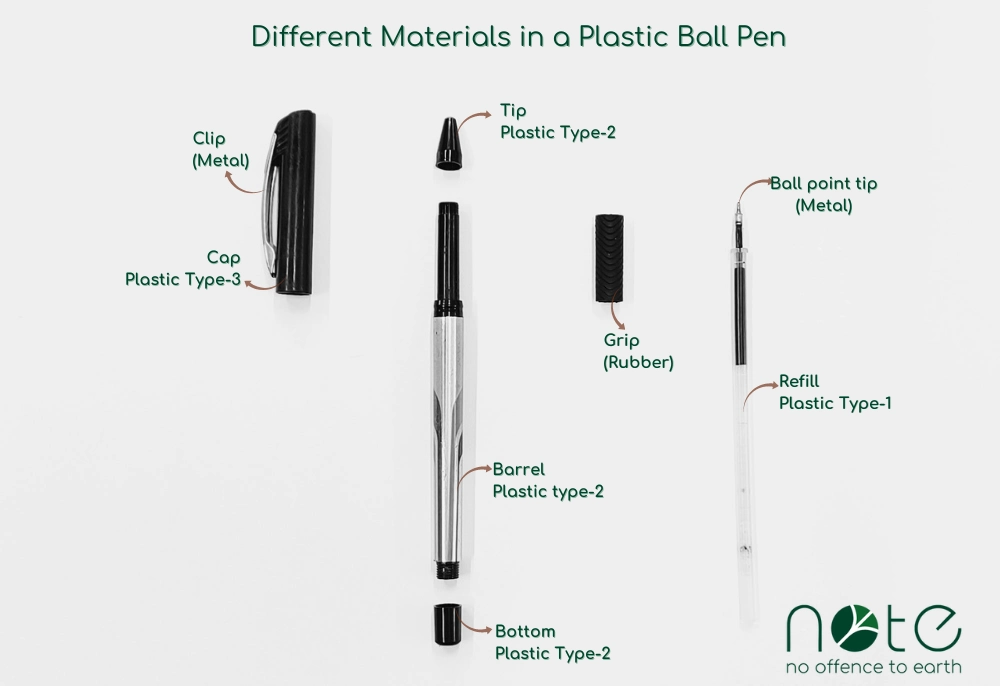
This mix of materials makes pens particularly tough to disassemble or collect from land or oceans, and properly process, posing a significant challenge in recycling efforts.
Moreover, the economic reality adds another layer of complication.
The cost associated with recycling these mixed-material pens often surpasses their production costs.
This lack of financial incentive means many eco-friendly recycling initiatives struggle to justify the expense, resulting in fewer pens being recycled and more ending up in landfills.
The roadblocks in recycling these common stationery items underscore the need for more sustainable designs and materials in everyday products.
Once you toss a pen or any plastic item, it doesn’t just disappear into thin air, right? It breaks down into these tiny little pieces called microplastics.
Microplastics are smaller than five millimeters (about the size of a sesame seed or smaller). These minuscule fragments can be found almost everywhere: in oceans, rivers, estuaries, beaches, and even sea ice.
They start their journey on land and are carried by rivers and wind to the ocean, where they become part of the ocean.
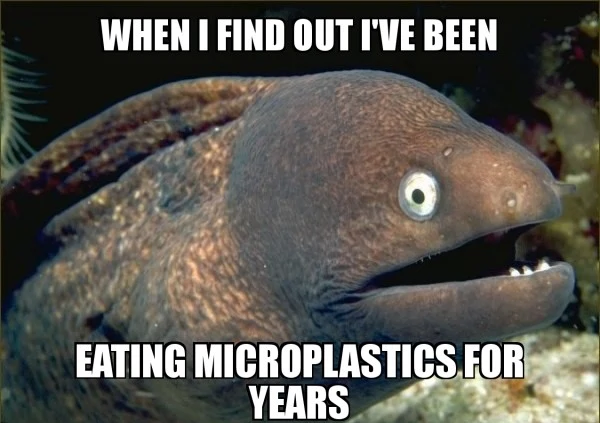
Microplastics accumulate in the food chain, posing a fatal threat to fish and other marine organisms.
Imagine a tiny fish mistaking these particles for food. As it consumes them, the microplastics accumulate in its system, affecting its health and survival.
The same goes for larger marine animals that feed on smaller fish. It’s a vicious cycle that disrupts ecosystems.
The economic impact is substantial as well. Around 20% of the global population relies on seafood for protein.
However, marine plastics reduce the efficiency and productivity of aquaculture and commercial fisheries due to fish mortality and entangled fishing gear.
Estimates suggest that for every ton of plastic entering the ocean, there’s an annual marine ecosystem loss ranging from $3,300 to $33,000.
And that doesn’t even account for the costs of fisheries, shipping, and tourism.
When we consume seafood, we unknowingly ingest microplastics. These particles act as potential carriers of toxic pollutants, transferring them from water to the marine food web.
Over time, this bioaccumulation can lead to inflammation, cell damage, and oxidative stress in our bodies. So, yes, microplastics pose a threat to human health.
On this date, there is barely any human being, that does not have microplastic in his or her body.
Plastic in the ocean? Nah, we’ve upgraded to having it in our bodies directly.
Plastic ball pens contribute extensively to the carbon footprint. Let’s learn more about how this piece of stationery leads to extreme carbon footprint generation.
This process isn’t just energy-intensive; it also pumps a significant amount of CO₂ and other greenhouse gases into our atmosphere. It’s a hefty price to pay for such a small item!
Plus, like other plastic products, when used in packaging, they can help keep food fresh for longer. This indirectly cuts down on the greenhouse gases that would have been emitted from food waste.
Some pens are incinerated, sending more CO₂ and pollutants into our air. And let’s not forget the pens that end up in oceans, adding to the growing problem of marine pollution and ecosystem disruption.
Since 1995, plastics’ global carbon footprint has doubled, reaching an alarming 2 billion tons of CO₂ equivalent in 2015, which makes up about 4.5% of global greenhouse gas emissions.
While plastic can offer lower greenhouse gas outputs in uses like food packaging compared to alternatives, the pervasive issues of use and disposal highlight the urgent need for recycling innovations and alternative, more sustainable materials.
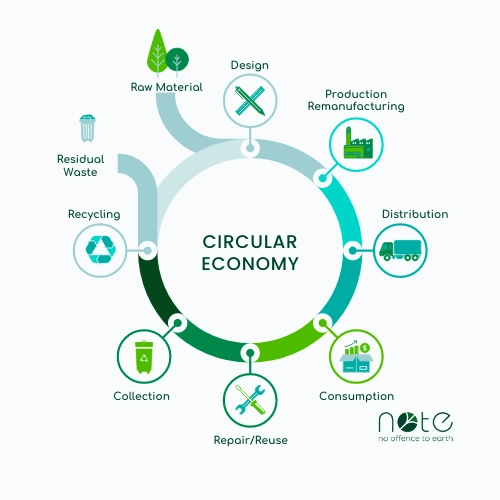
Circular Economy
Plastic pens have made life easier but at a cost – they’ve fueled a disposable consumer culture where we use things once and toss them aside. You know, those pens that run dry and straight into the trash? It’s a cycle that’s not just wasteful but harmful too, adding to pollution and environmental woes.
This buy-use-dispose habit highlights why we need a change. Imagine if we could use pens that we refill or ones made from eco-friendly materials. It’s not just about being eco-conscious; it’s about breaking free from this disposable cycle.
Shifting to refillable pens or eco-friendly pens isn’t just a trend; it’s part of a bigger picture called the circular economy. It’s like giving products a second life instead of letting them become trash. Plus, it’s a step towards a world where convenience doesn’t cost us the earth.
Think of every pen you use as a choice. A choice between contributing to a growing problem or being part of a writing revolution. It’s high time we shift our habits.
Opt for pens that are environmental friendly or better yet, invest in 100% plastic-free pens. If this blog resonated with you, we are sure that you would be interested in what we are building at NOTE!
Imagine the change if those 50 billion pens are sustainable or refillable, wouldn’t it be relieving.
To join us in this mission, you should check out NOTE pens. We have created world’s first 100% plastic-free pen with a biodegradable body, a pen that leaves a legacy without lasting forever. !
*50 Billion is an estimated number based on our research on plastic pens